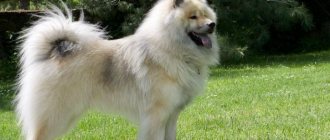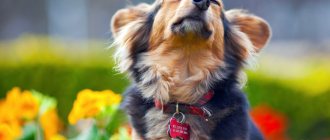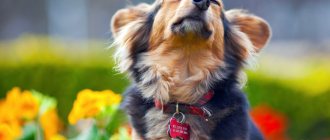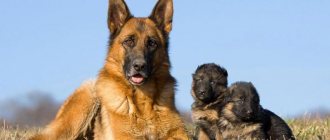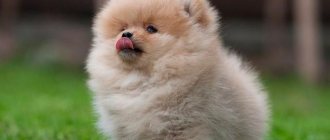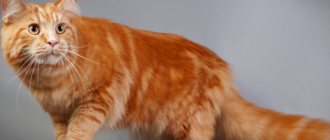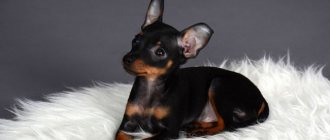Fighting dog breeds are becoming increasingly popular, but before choosing such a puppy, it is better to immediately decide on the handling rules and quality criteria so that the dog respects you, listens and follows commands. You will have to make a lot of effort, but training and attention will allow you to raise a smart pet even from a small fighting dog.
For future owners of fighting dogs
Let’s immediately decide which breeds of dogs are classified as fighting dogs, because these are the ones that can or participate in dog fights.
Important! We are talking not only about those who are already doing this, but also about those for whom the battle is genetically based, they have certain character traits and body structure.
The basic rules of behavior with such pets are:
- immediately decide whether the dog will participate in battles or not;
- in case of possible battles, you will have to devote time to training and training;
- start with basic commands: bring, face, sit;
- for training you can use large tree sticks, rubber tires and special toys;
- It’s better to get additional advice from a dog handler who will give recommendations based on the breed and purpose of your dog;
- you must immediately show that you are the master and you will have to be obeyed strictly.
There are rules for the behavior of fighting dogs when walking and in contact with other animals:
- It is better to walk the dog in a muzzle and on a short leash;
- If clashes with other animals occur, you must immediately take the dog by the collar and take it aside. But petting the head and giving treats is not worth it, the dog may bite you;
- in case of skirmishes, you need to pull the dog away by the tail and lower part of the body;
- You shouldn't hit dogs;
- Do not give your puppy's personal toy to another dog, otherwise it will provoke a fight.
Important! To prevent such situations from arising at all, you need to devote at least an hour and a half to training your pet every day. It is better to do this in an open area, but without strangers or other animals. Respect the dog, do not hit it and reward it for following commands.
Features of training
The appearance of a dog in the house entails new responsibility, especially if it is a fighting breed. Such an ill-mannered pet can become a serious threat not only to the family, but also to others.
Any breed will be safe with proper education and training.
Where to begin:
- A fighting dog must see authority in its owner, so the first thing you need to do is establish yourself as a strong personality.
- This breed needs frequent physical exercise, otherwise unmotivated anger may appear. Try to stay more in open areas, in the presence of other animals, so that the pet can socialize and in the future will not rush at animals.
- Training can begin with the usual commands: sit, lie down, bring, face.
- When training, it would be useful to raise your voice, otherwise the pet will relax and may become uncontrollable.
- Rewards for completing tasks in the form of treats are allowed.
- The dog must be respected and not hit.
Important! Never sort out family relationships in the presence of such a dog, this can cause aggression in him.
Fighting dog breeds
There is an unofficial rating of the best fighting dog breeds, the names and features of which we will consider below. But let’s immediately determine that these are not always large, aggressive animals. Among them there are small ones, with a rat-like or elongated muzzle, short-haired and friendly.
Top 20 best fighting dogs
- The English Mastiff is the largest dog and has long been famous as a winner of fights among dogs and even people. Now he has such characteristics as a gentle disposition, strict execution of commands, tolerance, affection, obedience and protection of people. It can be an aggressive animal, so it requires training.
- The American Staffordshire Terrier has a sharp mind, quick wit, and can be stubborn and persistent. Combines love for children and calmness. Requires mental and physical stress. Easily trainable and not aggressive towards people. If raised correctly, he will love children and surrounding animals.
- The American Bulldog previously drove and killed cattle on farms. He also often participated in dog fights, but after such events were banned, the dog was changed through selection with a pug. Therefore, the dog turned out to be loyal, smart, and hardy. It has a hunter's instinct and can be aggressive when it smells blood.
- The English Bulldog had previously participated in fights, was popular in Europe, and often won thanks to its physical characteristics. He is famous for his tenacity, touchiness, and can be unrestrained and impatient. He has almost lost his fighting qualities and requires constant physical training and command training.
- The Japanese Akita Inu has been known for many centuries as a fighting dog. Previously, they were used for hunting and in battles. It is distinguished by its aggressiveness towards strangers and other animals. It is difficult to train, can be too independent, but is devoted to its owner.
- The Bull Terrier is known throughout England as a fighter and guard. It can be aggressive, suspicious, and becomes reckless when smelling blood. These qualities are inherent in him from birth. Characterized by restraint, loyalty and humility.
- Dogue de Bordeaux are those dogs whose ancestors participated in gladiatorial battles, tracking down large animals and were in war. Aggressive, fearless, persistent. They can not only grab a dog or small animal, but also bite it to death.
- The Bandog is a selection from the Pit Bull Terrier and the Neapolitan Mastiff. Previously participated in hunting and protection. He is distinguished by attentiveness, devotion, fearlessness, endurance and anger towards strangers.
- The Spanish Alano is now almost never found; it is considered an extinct breed that is being restored. They belong to the hunting dogs, are known as a persistent and invincible fighter, are difficult to train, and are famous for their intelligence.
- The Staffordshire Bull Terrier has not been used in fighting for a long time, but at the sight of blood or a fight, the dog can easily rush into battle. It trains quickly, learns new commands, can be cruel and kill its opponent.
- The Caucasian Shepherd is used not only in fighting, but also in guarding. Suspicious, intelligent and easy to train, it can easily drive a person or another dog into a trap. Requires constant physical activity, training and discipline, otherwise it can attack the owner.
- The Dogo Canario (Presa Canario) is a popular large-sized fighting dog bred in the Canary Islands. It is distinguished by devotion, attentiveness, aggression towards strangers, and has excellent security qualities. Can participate in battles only after long training.
- The Cane Corsa is famous as an excellent guard and tracker; with training, it will become a real killer. Fighting qualities depend not only on upbringing, but also on genetics. If your parents were fighters, then a minimum of training, discipline, and you will get the same.
- The short-haired Neapolitan Mastiff is now used as a guard and protector in the family, and is distinguished by jealousy, which results in aggression. Fights and fights require long training, strict discipline and constant physical activity. Inherent in devotion, attentiveness, affection and care for the owner.
- The Pit Bull (American Pit Bull Terrier) is considered the most dangerous fighting breed. Characterized by loyalty, devotion, good memory. He will become a fighter and a killer only with the appropriate upbringing. Easy to train, can be aggressive towards children.
- The Tosa Inu is a type of Japanese mastiff that was bred specifically for fighting. When training, it follows clear rules; fighting techniques are genetically embedded. This is a powerful and resilient dog, which more often than others becomes a winner. Due to its stubbornness, it requires strict training and discipline, and can be aggressive towards other dogs.
- The large Tibetan mastiff was bred for protection and protection, is almost not aggressive, but does not like strangers, is independent in relation to the owner, and therefore requires constant training. Without training, it becomes aggressive, and it is better to limit communication with other dogs in a closed space.
- The Fighting French Bulldog is cheerful, friendly, loyal, has excellent protector qualities, and does not really like other animals. Fighting qualities need to be cultivated, a lot depends on the gene pool, they are not distinguished by aggression.
- The Fila Brasileiro is a large dog, in which aggression and protection of the owner have been instilled since childhood. It is difficult to control in public places and requires constant training and education. The dog is ready to constantly protect the family and owner, does not like other animals, and its massive size is considered an advantage in fights.
- Shar Peis are considered one of the oldest fighting dogs and can be a good guard dog. Characterized by independence, love for family, and devotion. He treats others aggressively and may attack them. To avoid skirmishes and fights, your pet needs to be constantly trained; it is difficult to train. To participate in battles, you need to develop certain qualities from birth, since anger and endurance in a fight are not inherent in them.
There are other breeds of fighting dogs, but they all require the same attention, care, training and discipline. Since lack of education leads to injuries to other animals and the owners themselves.
The most friendly, aggressive, hardy and simply wonderful!
In most cases, aggression in fighting dog breeds is the result of improper upbringing. Many of them are quite friendly to strangers, adore their owners and easily get along with cats in the same territory.
Training to develop strength and endurance
In any fight, the animal's physical skills are important and should be developed through training. They should be regular and based on the pet’s capabilities. Otherwise, the dog can be exhausted, which will not have a very good effect on its well-being.
When working on your pet's physical training, it is important to develop qualities such as endurance, strength and agility. In order for your dog to fight effectively with other animals, we recommend that you include the following exercises in your training:
- Running, which develops endurance and muscle strength. Start with short walks, lasting half an hour. Of course, it all depends on the age of your dog. You can gradually start running from 12 months, for 5-10 minutes. But the loads should not be excessive. Only when the skeleton is stronger and the dog is not tired, increase the running time. So you can increase it up to an hour. If you have an adult dog, you can accompany him on a bicycle;
- We pull the tire. This type of training is good for developing perseverance on the one hand, and the ability to control one’s strength on the other. Suitable only for adult and mature dogs. For training, a harness and leashes are used, to which a tire and bricks are attached, if you need to increase the weight. They are placed inside the tire. Training is carried out on a sandy or dirt road, you need to start from short distances and without bricks;
- Education of cruelty. In order for a dog to fight with other animals, a method has been used that has been known for a long time. A wild animal, for example a wild boar, sits in a cage. Your task is to set the dog on the animal. Allow your pet to bark and attack, subduing it with a leash. They develop anger by tying puppies, placing a bone or food between them;
- Swimming perfectly develops the muscular system of still immature puppies. In addition, the dog will train persistence and strength.
When a dog fights, you need to take care of the diet. The nutrition of such a dog is one of the important issues. In order to maintain muscle mass and withstand training, it is necessary to ensure a sufficient amount of protein and fat from food. Carbohydrates still remain the leading ones in metabolism, which means their percentage should reach 50-60%. At the same time, proteins can make up 25-30%. The supply of useful substances is contained in meat products, liver, hearts, cottage cheese, milk, and boiled grated vegetables. Carbohydrates are found in porridges, which can be prepared together with meat additives. Dogs can only eat dry food after 3 months, if we are talking about a puppy.
When preparing your baby, keep in mind that until the age of 1.5 years, his skeleton is just forming. This means that excessive loads can be harmful. Inappropriate and overly heavy exercises can undermine the muscles, preventing them from working properly. In addition, you risk your pet getting a sprain.
The friendliest fighting breeds
Dogue de Bordeaux (French Mastiff)
Height: 58-68 cm
Weight: 45-60 kg
Level of aggression: moderate-aggressive
Despite the average values, the size of some Great Danes can reach almost 100 kg. Such impressive parameters were successfully used by merchants wandering from city to city to protect their goods. The dogs entered the combat arena much later, demonstrating their strength and fearlessness there.
Dogues de Bordeaux, raised in a loving family, are the complete opposite of their formidable ancestors. They are reasonable, good-natured and quite lazy. Dogs become good nannies for children, and demonstrate their fighting qualities only to protect their owners.
Cane Corso
Height: 60-68 cm
Weight: 40-50 kg
Aggression level: moderate-aggressive, ideal guard
The ancestors of the Cane Corso, who lived in Ancient Rome, participated in gladiator fights. Italy is recognized as the country of origin of this fighting dog breed. Local shepherds and farmers used its representatives to herd cattle and guard their homes.
The balanced character and developed intuition of the Cane Corso are skillfully used by the police. Dogs easily recognize enemies and quickly eliminate danger without waiting for a command.
Cane Corsos get along well not only with children, but also with animals. With timely socialization, they recognize other pets as members of their family without trying to take a leadership position.
English Staffordshire Bull Terrier (Staffbull)
Height: 35.5-40.5 cm
Weight: 11-17 kg
Aggression level: non-aggressive, ideal guard
From the photo of this fighting dog breed, whose name comes from a bulldog and a terrier, it is difficult to guess about its past. The charming and emotional face makes one seriously doubt the reality of the dog’s participation in closed fights. Despite the aggression smoothed out by the breeders, the staffbull’s bite force remained the same. The animal can hold any object with its teeth for a long time, hanging right in the air.
Fortunately for the owners, the Staff Bull is driven not by strength or muscles, but by developed intelligence. He allows himself to behave aggressively towards people only if his owner is threatened. This breed is people oriented. Staffbulls are loyal to their owners, love children, but often try to demonstrate their leadership and stubbornness.
Ca-de-bo (Majorcan Mastiff)
Height: 52-68 cm
Weight: 30-38 kg
Aggression level: moderate-aggressive, ideal guard
This dog was bred on the island of Majorca by mating Spanish mastiffs and fighting breeds brought by English sailors. Ca-de-bos successfully guarded ships from pirates, helped in hunting, and took part in bullfights and dog fights.
Mallorcan Mastiffs are excellent babysitters. They forgive their little owners any pranks and happily participate in their pranks.
Unlike most pets, Ca-de-Beaus are equally devoted to each of their owners and do not choose favorites. They treat strangers and animals with respect.
Their ferocious temperament only manifests itself during defense. Not even a mouse will be able to penetrate the territory entrusted to them. The dog smells intruders perfectly and never succumbs to their feigned affection.
How to teach a dog to fight
Training dogs sometimes requires a more thorough approach and painstaking work. If you are faced with the task of making your pet's training more productive, plan classes in accordance with the dog's level of training. Every pet can achieve a successful result if there is close contact between the owner-trainer and the animal. So, you must become an authority for the dog. But here you also need to try, because even in this case, respect is won not by force, but by a confident and persistent position.
The most dangerous fighting breeds
Bull Terrier
Height: 53-56 cm
Weight: 23-32 kg
Aggression level: aggressive, ideal guard
Despite its modest size, this dog almost always comes out victorious. Its strong jaws, numbering 42 teeth, are capable of holding prey for up to 3 hours. In battle, the bull terrier is particularly cruel. Instead of one decisive blow, he inflicts many wounds on his opponent, watching as he bleeds to death.
In the family circle, Bull Terriers are very affectionate and love to play with children. To adequately perceive strangers, these pets require careful training and timely socialization.
American Pit Bull Terrier
Height: 43-53 cm
Weight: 14-27 kg
Aggression level: aggressive
Due to increased aggressiveness and uncontrollability, most countries prohibit breeding and keeping these fighting dogs. Despite the prohibitions, the lightning-fast reaction of the pit bull is successfully used by the police. After training, these dogs become experienced bloodhounds thanks to their keen sense of smell. With their help, law enforcement officials find drugs and explosives in a timely manner.
During an attack on an enemy, poorly trained pit bulls get their heads blown off. They refuse to follow commands and do not respond to the owner until they destroy the victim.
Bullmastiff
Height: 61-68.5 cm
Weight: 41-59 kg
Aggression level: aggressive
These fighting dogs were bred to fight poachers. To the delight of the breeders, they immediately dealt with the problem, destroying the offenders right on the spot. This turn is not at all surprising, because the force of compression of the bullmastiff’s jaws is 155 kg per cm2.
The foresters, however, did not like the new assistants. Because of this, breeders had to work some magic on unmotivated aggression in order to channel it in the right direction.
Bullmastiffs are ideal partners in special operations. Their ferocity, tough temperament and indifference to provocations have more than once saved the lives of security forces. When attacking an enemy, the dogs knock him down and grab his most sensitive place.
American Bulldog
Height: 55-68 cm
Weight: 35-60 kg
Aggression level: aggressive, ideal guard
Hatred of other dogs is ingrained in American Bulldogs from birth. This is due to their long history of participation in dog fighting and bull baiting.
Despite their increased aggressiveness towards their relatives, ambuli are highly devoted to their owners. To protect him, they are ready to fight the enemy until their last breath. Their main weapon is powerful jaws that move vertically and horizontally. The bites of this dog resemble the work of a shaving machine.
Not every owner can cope with a wayward and stubborn dog. For adequate behavior, the concepts of good and evil will have to be ingrained in his head from early childhood. Otherwise, the reason for an attack may be the insufficiently warm gaze of the dandelion granny living next door.
Rottweiler
Height: 56-68 cm
Weight: 42-50 kg
Aggression level: aggressive
A collision with this fighting dog often ends in death, so in some countries it is not recommended to keep it at home. The Rottweiler's jaws easily tear out pieces of flesh, causing serious injury to the enemy.
Despite his violent temper, the dog rarely attacks first. In battle, he amazes with his intelligence and stubbornness. Thanks to its low pain threshold, the animal never retreats from a more formidable opponent and is difficult to train. Because of this, Rottweiler owners have to confirm their authority every day.
When to start training a dog
As soon as a German Boxer puppy appears in your home, immediately begin to build a relationship with him. From the first day it is necessary to provide him with everything he needs: bowls for water and food, collar, leash, bed, suitable food, toys and of course treats. You need to give him a lot of attention so that he feels safe and begins to trust you. From a very early age, a German Boxer puppy needs to be introduced to commands. In addition, in the first months it is necessary to study commands both at home and on the street. First, the puppy must remember its name. We wrote how to choose a suitable nickname in one of our articles. The name should be short, easy to remember and the dog should be called only by it. When the pet has already mastered its name and finally begins to respond, then we move on to commands. By the 3rd month he should master the following commands: “Ugh!”, “Come to me!”, “Place!”, “Nearby!” and “Fetch!” (optional). Then you can move on to the rest, of course, if you need them.
The largest representatives of fighting breeds
Caucasian Shepherd Dog
Height: at least 64-68 cm
Weight: at least 45-50 kg
Aggression level: moderate-aggressive, ideal guard
Thanks to their developed security functions, Caucasians are successfully used to protect important objects. The largest representatives reach 100 kg. An impressive appearance stops an attacker before committing a crime. The most desperate and unreasonable ones get to personally experience the aggression, courage and endurance of these dogs.
Caucasian Shepherds have a complex character. Their rancor, touchiness and independence often lead to very non-standard reactions.
This breed is also very difficult to train. To carry out a command, the dog needs to seriously think about the appropriateness of such actions. Most often, thoughts end with the trainer ignoring him.
Alabai (Central Asian Shepherd)
Height: at least 65-75 cm
Weight: at least 40-50 kg
Level of aggression: moderate-aggressive
Alabais are aboriginal dogs. All their qualities are provided by nature, not by man. Representatives of this breed were used as fighting dogs, but most often their functions included guarding and driving herds. The organizers of dog fights were attracted by the strength and fearlessness of the animals, but were embarrassed by the lack of passion for killing.
The large dog, reminiscent of a bear, is easy-going and friendly, but really does not like strangers. The main feature of the Alabai is its late maturation. Until the age of 4, this huge pet remains an unreasonable puppy, which makes raising it very difficult.
Gampr
Height: 67-77 cm
Weight: 45-75 kg
Aggression level: non-aggressive, ideal guard
An alternative name for the breed is the Armenian Wolfhound, which emphasizes the impressive dimensions of the animal. After domestication, Aboriginal dogs began to accompany their owners on hunts and help with guarding livestock and property.
Despite their terrifying appearance, gampras are docile and soft pets that love their owners. They are often used as nannies. The younger the family member, the more care the dog shows. Similar attention and affection is given to other pets.
The duration of maturation of Armenian wolfhounds coincides with Alabai. They remain puppies for a long time, which negatively affects their obedience. When communicating with a person, equality is important for an animal. Gampras do not tolerate dominance and build relationships based on friendship.
American Bandog
Height: 51-76 cm
Weight: 45-68 kg
Aggression level: aggressive
As many as 3 fighting dogs took part in the creation of the Bandog: a pit bull, an Amstaff and a Neapolitan mastiff. As a result of crossing, the breeders received a dog with a powerful physique, strong jaws, a menacing appearance and an aggressive disposition.
After a baptism of fire, it turned out that the bandog was not persistent and persistent enough. During the grab, he quickly loosened his grip, giving his opponent a head start. The fight with the pit bull ended in defeat in the first half of the round.
Due to its imbalance and uncontrolled behavior, the breed was not recognized by any cynological organization. The owners who decided to tame the first bandogs had to keep them in cages for their own safety. The dogs were released exclusively at night to protect the territory.
Fighting dog diet
In order for your fighting dog training to develop muscle mass to be as effective as possible, your pet must eat properly. To gain weight, a dog must consume more calories than it expends. Actually, the principles of weight training for dogs and humans are similar. For example, the daily calorie intake for a male German Shepherd should be from 2.5 to 3 thousand calories.
This calorie intake is comparable to what a beginning bodybuilder with a body weight of 80 kilos needs to use. The dog should also start eating five times a day. In addition to two main meals, you should provide your pet with three more snacks.
A fighting dog's diet should contain 55 to 60 percent carbohydrates and 25 to 30 protein compounds. About 60 minutes before the start of the lesson, it is recommended to give the dog BCAA, mineral supplements and adaptogens. If necessary, supplement them with caffeine and energy supplements such as ATP or creatine. The amount of carbohydrates at this time should be from 100 to 150 grams. An hour after completing the lesson, you should close the “protein-carbohydrate” window, giving your pet 40 to 60 grams of carbohydrates and 20–30 protein compounds.
The dog's food should be as close to a liquid state as possible, for which all products should be passed through a blender. As a result, nutrients will be absorbed as quickly as possible, which will have a positive effect on weight gain. You should remember that after training a fighting dog to develop muscle mass, solid food is digested extremely slowly.
The dog should sleep for eight hours, and you should protect your pet from stress before and after training. Never train a fighting dog to develop muscle mass in the hottest part of the day, and water should only be given to the dog 10 or 15 minutes after completion of the training.
The most powerful and hardy fighting breeds
Doberman
Height: 63-72 cm
Weight: 32-45 kg
Aggression level: moderate-aggressive, ideal guard
The thin and graceful proportions of Dobermans are a good cover. These animals are unusually strong and resilient. Their bite force is 142 kg per cm2, and their maximum running speed is 38 km/h.
This dog's aggression always has a reason. He is strict with robbers and intruders who decide to harm his masters. A ferocious reaction towards ordinary strangers and animals is possible only with insufficient education.
Fans of this breed note its high intelligence and phenomenal memory. With proper training, your pet can be left with small children without fear.
Billy Kutta
Height: 71-85 cm
Weight: 64-95 kg
Aggression level: aggressive
In Russia about this fighting breed of dogs
only a few know. Their homeland is India. Billy Cutt was used in dog fighting and big game hunting. After the cruel entertainment was cancelled, the animals were brought in to protect the territory. Despite this, some representatives still participate in underground fights.
Billy Kutta takes an honorable 4th place among the strongest dogs. In addition to his strength, impressive size and fearlessness in battle, he is helped by his wrinkled neck. Many thick folds make this area virtually invulnerable.
Due to increased aggressiveness, the animal should not be walked without a muzzle. Education and training are complicated by his stubbornness and dominant behavior.
American Staffordshire Terrier
Height: 43-48 cm
Weight: 22-30 kg
Aggression level: moderate-aggressive, ideal guard
This breed of fighting dog is a close relative of the pit bull. Despite their relationship, Amstaffs are less aggressive and easier to train. Due to its great physical strength, a pet carried away by its thoughts can easily drag a careless owner along with it.
Amstaff can be safely entrusted with the protection of the territory. He senses intonation well, does not give in to provocations and attacks without warning barks. A conversation in a raised voice with a neighbor who parked incorrectly can end in a real tragedy for the latter.
Tosa Inu
Height: at least 55-60 cm
Weight: 40-90 kg
Aggression level: non-aggressive
The popularity of dog fighting has not escaped Japan either. Thanks to their love of rules and traditions, Japanese fighters enjoyed special respect. The Japanese divided the dogs into different weight categories and tried to reduce the risk of injury to four-legged fighters to a minimum.
The Tosa Inu's bite force is close to that of a pit bull. Even as a puppy, the dog easily chews through the trunk of a young tree. In battle, dogs are distinguished by fearlessness, patience and endurance. They are well trained and know how to analyze their mistakes, changing their strategy as the battle progresses.
Tosa Inu are loyal companion dogs that need human company. You can only buy such a pet in their homeland. The American and European versions are much inferior to the original in strength and endurance.
Fights in battles with criminals
You can train your dog to fight with strangers to protect territory. But there are many points to consider here. For example, when detaining an armed person, it is necessary to prevent the attack in time. Therefore, here, as in boar hunting, it is important to teach the dog to attack correctly. It is sometimes very difficult to predict where a person’s blow will come from. Training is precisely what is needed so that the dog does not get hurt in a real situation. An outsider in special protection will help you teach your dog to repel an attack from an ill-wisher.
If the dog is guarding the territory, you must first walk with him around the perimeter, marking the boundaries. Then put the dog on a chain and give the command to the “criminal”. Let him get into your yard and tease the dog. The “stranger” stimulus to which the dog must react will help here. It can be a bark, and when approached, a bite. When the attacker is armed, it is worth working on the commands “quiet”, “crawl”, “front”, “weapon”, attack from the back.
Fighting breeds for keeping in an apartment
English bulldog
Height: 50-55 cm
Weight: 23-25 kg
Aggression level: non-aggressive
Unlike the Ambule, the English Bulldog is an ideal pet for inexperienced trainers. Thanks to his calm temperament, he gets along well with children and other pets. Congenital phlegmatism allows him to be kept in an apartment without subjecting him to frequent training.
Despite the fact that the English Bulldog has practically lost all its fighting skills, it used to successfully participate in fights throughout Europe. After the ban on dog fighting, the breed underwent some changes in appearance and character, which allowed it to move into the ranks of companion dogs.
Thanks to their developed memory and high intelligence, bulldogs are able to remember up to 400 words, which makes training much easier. Due to their friendliness and indulgence towards children, these dogs are often dressed up in elaborate outfits.
The disadvantages of this dog include only touchiness, stubbornness and slobbering. If the pet gets used to sleeping in the owner's bed, then the bed linen will have to be changed daily.
Shar Pei
Height: 44-51 cm
Weight: 18-35 kg
Level of aggression: moderate-aggressive
Looking at the Shar Pei, it’s hard to believe that this miracle with a blue-black tongue is one of the types of fighting dogs. Their combat past confirms the abundance of folds necessary to protect against bites. Despite its powerful body and strong jaws, the dog is much inferior in strength to Rottweilers and pit bulls.
When raising a Shar Pei, it is important to avoid negligence and frivolity. These dogs are very distrustful of strangers and can lose their temper if they stare too closely. Such outbursts of aggression are often explained by ordinary fear. The animal's deep-set eyes limit the area of peripheral vision. Because of this, any sudden movement is perceived as a threat.
French Bulldog
Height: 24-36 cm
Weight: at least 8-14.5 kg
Aggression level: non-aggressive
It's hard to believe, but these charming animals with expressive eyes are close relatives of fighting dogs. Their ancestors took part in fights in dog rings and were actively used to catch rats - a threat to English manufactories. The attractive appearance and good disposition of bulldogs captivated the French elite, who elevated them to companion dogs.
Frenchies practically do not shed, do not smell like dogs, rarely bark, do not require special care and adore children. Due to their compact size and low physical activity, they can be kept even in a studio apartment.
The Bulldog is a very loyal and fearless dog. Sensing danger, he boldly enters into battle with a larger and more formidable opponent. Joining a local dog club with such a pet will be extremely problematic.
Online consultation with a veterinarian
Download the specialized application for pet owners Petstory on the IOS and Android platforms using the link – https://petstory.ru/prilozhenie-konsultacija-veterinar/.
Read us first - add the site to your favorite sources.
Add a comment
{"commentics_url":"\/\/express-novosti.ru\/comments\/","page_id":1323639,"enabled_country":false,"enabled_state":false,"state_id":0,"enabled_upload": false,"maximum_upload_amount":3,"maximum_upload_size":5,"maximum_upload_total":5,"securimage":true,"securimage_url":"\/\/express-novosti.ru\/comments\/3rdparty\/securimage\ /securimage_show.php?namespace=cmtx_1323639″,”lang_error_file_num”:”\u041c\u0430\u043a\u0441\u0438\u043c\u0443\u043c %d \u0444\u0430\u0439\u043b\u043e\ u0432\u043c\u043e\ u0436\u0435\u0442 \u0431\u044b\u0442\u044c \u0437\u0430\u0433\u0440\u0443\u0436\u0435\u043d\u043e.","lang_error_file_size":"\u041f\u043e \u0436\u0430\u043b\ u0443\u0439\u0441\u0442\u0430, \u0437\u0430\u0433\u0440\u0443\u0437\u0438\u0442\u0435 \u0444\u0430\u0439\u043b \u0440\u0430\ u0437\u043c\u0435\u0440\u043e \u043c \u043d\u0435 \u0431\u043e\u043b\u0435\u0435 %d MB.","lang_error_file_total":"\u041e\u0431\u0449\u0438\u0439 \u0440\u0430\u0437\u043 c\u0435\u0440\ u0432\u0441\u0435\u0445 \u0444\u0430\u0439\u043b\u043e\u0432 \u0434\u043e\u043b\u0436\u0435\u043d \u0431\u044b\u0442\u044c \ u043d\u0435\u0431\u043e\u043b\ u0435\u0435 %d MB.","lang_error_file_type":"\u041c\u043e\u0436\u043d\u043e \u0437\u0430\u0433\u0440\u0443\u0436\u0430\u0442\u044c \u0442\u0 43e\u043b\u044c ""lang_text_loading":" u0437\u043a\u0430 ..","lang_placeholder_state":"\u0420\u0435\u0433\u0438\u043e\u043d","lang_text_country_first":"\u0421\u043d\u0430\u0447\u0430\u043b\u0430 \u0432\u044b\u04 31\u0435 \u0440\u0438\u0442\u0435 \u0441\u0442\u0440\u0430\u043d\u0443″,”lang_button_submit”:”\u0414\u043e\u0431\u0430\u0432\u0438\u0442\u04 4c","lang_button_preview":" \u041f\u0440\u0435\u0434\u0432\u0430\u0440\u0438\u0442\u0435\u043b\u044c\u043d\u044b\u0439 \u043f\u0440\u043e\u0441\u043c\u 043e\u0442\u0440″,”lang_button_remove ":"\u0423\u0434\u0430\u043b\u0438\u0442\u044c","lang_button_processing":"\u041f\u043e\u0434\u043e\u0436\u0434\u0438\u0442\u0435..."}
Varieties
Fighting breeds are born to fight each other. They are brought up in harsh, strict conditions. This does not mean that they are evil, hateful towards humans. Without control and proper education, our four-legged friends will become dangerous to society. If you introduce your pet to society, he will become a good companion. With proper upbringing, it will be an excellent guard for the home.
It is impossible to list the numbers of all breeds of “fighters”. For example, a list of some:
- Terriers;
- Bulldogs;
- Pitbulls;
- Shar Pei;
- Shepherd dogs;
- Alabai;
- Rottweilers;
- Mastiffs.
